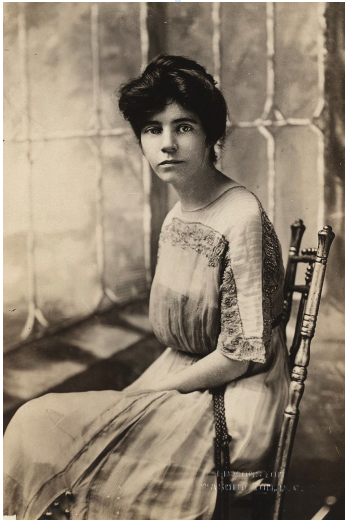
An important function of the First Amendment is to protect unpopular viewpoints from governmental suppression, affording them the chance to gain acceptance in the marketplace of public opinion. Some ideas that are widely accepted today started out as detested minority viewpoints. One such idea—which was widely and bitterly opposed for nearly seventy years—is the notion that women should have the same voting rights as men. That modest idea, which inspired so much scorn and opposition, finally achieved constitutional protection in the 19th Amendment (ratified in 1920). With voting already underway in this centennial year of women’s suffrage, it is worth a moment to absorb the First Amendment lesson to be learned from the suffragists. Even a deeply controversial idea, if it has merit, can gain acceptance in the long run; the role of the First Amendment is to protect ideas from out-and-out prohibition, buying time for fuller consideration and an evolution in public opinion. That is why the First Amendment forbids viewpoint discrimination by the government—and viewpoint suppression by an intolerant majority acting through the government.
The suffrage movement languished for decades while its original leaders, preferring to work quietly behind the scenes, pleaded with legislators outside of public view. But the pace of progress accelerated when a new generation of suffragists, led by Alice Paul, literally took their message to the streets. Paul was the first person in history to stage protests in front of the White House. She conducted a giant parade in Washington D.C. featuring suffragists from all across the country. She instigated the public burning of an unfulfilled promise of support from President Woodrow Wilson. When she and her colleagues were arrested for their protest activities, she orchestrated hunger strikes in prison. Some members of the public were shocked to see ladies boldly engaged in political protest, and a majority of Americans initially opposed voting rights for women—but now the idea was firmly implanted in public view, and Alice Paul kept it there.
Gradually, the tide of public opinion shifted. Paul’s pivotal tactic was the White House protest. Under her leadership, suffragists picketed the White House almost continuously from January 10, 1917 until March 19, 1919, finally relenting when President Wilson called a special session of Congress that approved the 19th Amendment and sent it to the States for ratification.

Over this grueling two-year span, the suffragists faced considerable public hostility. On several occasions police looked on while the women were beaten, and their banners were destroyed, by hostile onlookers. Soon the police themselves were confiscating banners. Eventually, the suffragists were being arrested and jailed on a regular basis, but they doggedly returned to the picket line when freed. As their picketing persisted, their prison terms grew longer—three-day sentences were soon replaced by 30-day and 60-day terms, with up to seven months for suffragist leaders. Arrested on October 20, 1917 while picketing in front of the White House, Alice Paul staged a hunger strike upon her arrival in jail. Prison officials responded by force-feeding her, preventing her from sleeping at night, and subjecting her to interrogation by psychiatrists who threatened to commit her to an insane asylum. Learning of Paul’s mistreatment, her followers flooded the White House sidewalk, prompting a mass arrest in which thirty of them were jailed. Following Paul’s lead, they all began hunger strikes. Nine days later, in habeas corpus proceedings before the same judge who had sentenced them, the thirty suffragists appeared in court—all of them starving, some of them too weak to walk. The courtroom was packed with reporters. On cross-examination, the warden found it impossible to justify the shocking condition of the prisoners. Soon they were all released from custody, including Alice Paul.
Press reports of the suffragists’ mistreatment triggered a storm of public outrage. Those reports, when added to the steady coverage of the White House vigil, helped to inspire a grudging public respect for the courage and dedication of the suffragists. Gradually, their message was gaining adherents. When they finally secured the backing of President Wilson, they were on the road to victory.
It’s not my aim here to retrace every step in the suffragists’ quest for the vote. I’m simply citing their experience as a vivid example of the power of an idea—even a detested idea—to gain acceptance in the marketplace of public opinion. The suffragists’ hard-fought victory should serve as a warning against consigning unpopular ideas to oblivion. Their victory, I hope, can make it easier to understand why the First Amendment protects all ideas—even ideas that are currently despised—from government suppression. Since we cannot predict the future sway of any given idea, the First Amendment affords every idea the chance gain acceptance over time.
FURTHER READING: Mary Walton, A Woman’s Crusade: Alice Paul and the Battle for the Ballot (2010); Doris Stevens, Jailed for Freedom: American Women Win the Vote (Carol O’Hare ed., 1995); Christine A. Lunardini, From Equal Suffrage to Equal Rights: Alice Paul and the National Woman’s Party (1986).